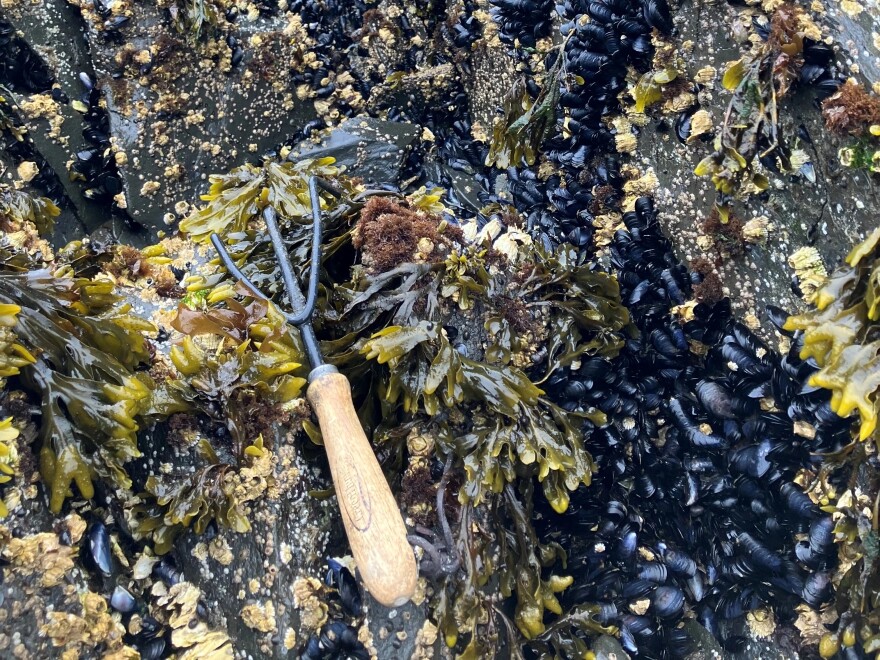The Bristol Bay Area Health Corporation issued an emergency harvest warning on June 7 reporting high levels of toxins in razor clams in Chignik Lagoon and blue mussels in Sand Point. The shellfish are unsafe to eat, and could cause paralytic shellfish poisoning. Some of these toxins are 1,000 times more potent than cyanide, and can cause severe illness and death, according to the health corporation’s environmental health department.
Paralytic shellfish toxins occur during algal blooms, produced by warming water conditions surrounding the Alaska Peninsula.
Samples of the razor clams and mussels were taken and tested through a Knik Tribal Council program. Mekia Bushell is a researcher and the harmful algae blooms coordinator with the tribe, which has worked to support coastal communities around the state to test for toxic shellfish since the 1970s. She said increased levels of PSP toxins are common this time of year.
“This can become an issue, as we are seeing, during the summer months, when the waters get warmer. And perhaps there's an upwelling of nutrients coupled with the increased water temperature changes that are associated with large blooms,” Bushell said. “There tends to be the initial PSP peak at the end of May and beginning of June, and then a few others throughout the summer.”
The toxic shellfish may smell and taste normal, however when consumed symptoms of poisoning include tingling of the lips and tongue, progressing to a tingling in the fingers and toes and loss of muscle control. People should call 911 and seek medical attention immediately. Death can occur in as little as two hours from breathing muscle paralysis.
There is no known cure for shellfish poisoning, but with proper care and stabilization at a hospital, the toxin may run its course with less risk of death. Treatments like additional oxygen and respirators can be life-saving.
Bushell tests shellfish for toxins from all over the state. She said the Knik Tribe is working to expand sampling efforts in Bristol Bay, and statewide.
“We have been expanding our research from shellfish to other levels of the food web and the research has been indicating that this toxin moves up the food web,” Bushell said. “So we are trying to further investigate crab guts and fish guts to determine the levels of PSP in these tissue areas.”
According to Bushell, that’s more concerning with climate change producing warmer waters throughout Alaska.
“We know we're going to see more phytoplankton blooms and more PSP,” Bushell said. "Right now, we're just concerned about those toxins having a greater likelihood now of moving up the food web.”
This doesn’t only apply to the summer months, as shellfish that feed on toxic plankton may hang on to those toxins through the winter. The only way to protect yourself is by avoiding untested shellfish collected from Alaska beaches. Bushell urges subsistence harvesters in Bristol Bay to contact the Knik Tribe, the Department of Environmental Conservation, or another certified lab to discuss getting their shellfish tested, in order to harvest safely.
For testing or more information see kniktribe.org.
Get in touch with the author at Jack@kdlg.org or 907-842-2200.

